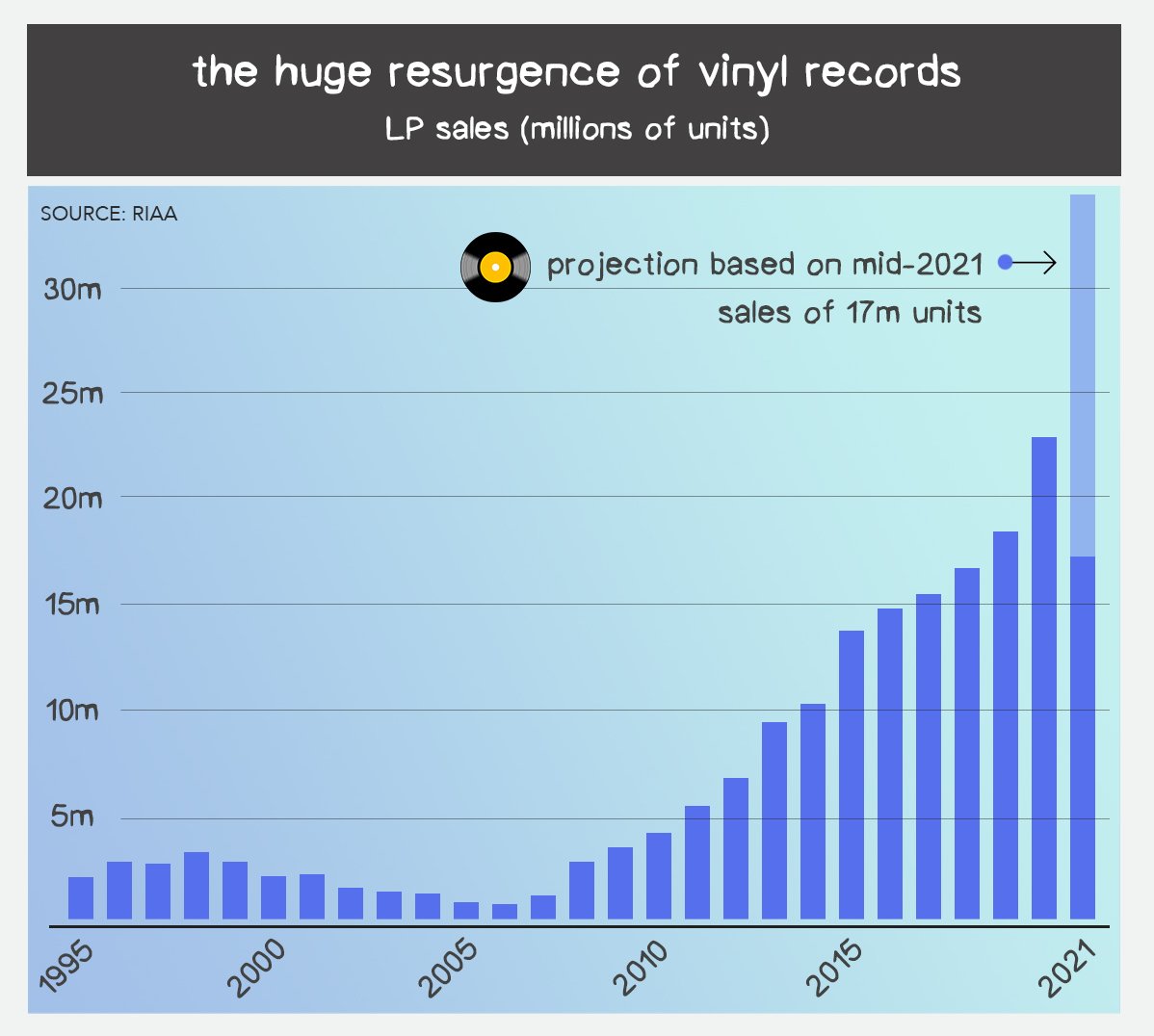The Vinyl Boom

About five years ago, a funny thing happened: for birthdays and holidays, instead of LEGO sets or basketball jerseys, my son started asking me to buy him vinyl records. I happily complied: it was fun to mix new and old records together, track down semi-rare albums, and then listen to the music together, plus talk about music all the time.
It turns out my teen wasn’t an outlier: younger people are buying vinyl at a rate not seen in over a generation, not just as collectors or as an affectation, but as a first-line way to enjoy music, new and old. What’s more, the revenue from vinyl sales was a small but substantial lifeline to artists squeezed by streaming’s stingy royalty rates.
At The Hustle, Zachary Crockett does the math:
For modern-day indie artists, it’s a welcome boom. A vinyl record costs ~$7 to manufacture, and a band typically sells it directly to fans for $25, good for $18 in profit. By contrast, streaming services only pay out a fraction of a penny for each listen. A band would have to amass 450k streams on Spotify to match the profit of 100 vinyl sales.
There are also moments where the streaming and vinyl economy come together. Bandcamp has a vinyl pressing service, and some of the most popular music videos on YouTube are needle drop recordings of a fan playing a vinyl record.
There are some bottlenecks, though. First, streaming is a much bigger ocean than vinyl. Second, vinyl’s manufacturing capacity is greatly reduced from its heyday, making it more arduous and fragile to make, manufacture, and distribute a vinyl record. Finally, the environmental impacts of vinyl manufacturing aren’t great.
But the aesthetics — oh, the sweet joy of a needle on a record — the aesthetics can’t be beat.
Update: Crockett’s arithmetic above is a little hasty. For one thing, it doesn’t include shipping costs, which can either make a record much more expensive or cut into the profit margin. It’s definitely a better profit margin than streaming music royalties, but it is one where costs are at a premium.





Stay Connected